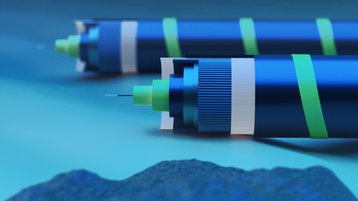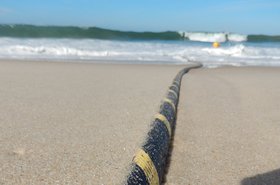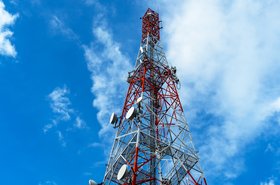The National Physical Laboratory (NPL), the UK’s national metrology center, plans to use subsea cables to detect earthquakes in the Pacific Ocean.
In collaboration with the New Zealand-based Measurement Standards Laboratory (MSL), a seafloor cable running offshore from New Zealand will be used to pick up signs of earthquakes and ocean currents.
The system does not require any new hardware or infrastructure. By performing ultra-sensitive optical measurements, scientists will use the existing optic fiber infrastructure to gather real-time environmental data and provide an early warning system to safeguard populations in the event of a tsunami.
First tests will take place later this year on a 3,876km (2,408 miles) section of the Southern Cross NEXT cable on the floor of the Tasman Sea, between New Zealand and Australia.
The laboratories said the Pacific Ocean is a highly seismically active area, making it an ideal test bed for the new technology, but future projects could see this technology implemented globally.
The technology could also potentially be used for understanding ocean floor geology and climate change through monitoring seafloor temperature.
The technique, derived from quantum science techniques, was first developed by NPL in 2021. It was demonstrated in the Atlantic Ocean across a 5,960km (3,703 miles) submarine optical fiber link between Canada and the UK.
Giuseppe Marra, principal scientist at NPL, said: “This exciting UK-NZ join project will enable NPL’s pioneering seafloor cable-based environmental detection technique to be tested in one of the most seismically active regions of the world.”
He added: “This will significantly advance research on these innovative environmental sensing techniques, with impact on a number of science areas, from seismology to oceanography, as well as future societal applications, such as early tsunami warning systems.”
Annette Koo, director and chief metrologist at MSL, said: “MSL is delighted to partner with NPL to bring this potentially powerful technology to the Pacific. It is another beautiful example of improvement in measurement giving us access to depths of information that in turn push the limits of our metrology.”
The UK’s Science Minister Andrew Griffith announced today that this project is part of a wider international collaboration agreement between the UK and New Zealand. Former Prime Ministers Boris Johnson and Jacinda Arden signed the Research, Science, and Innovation Agreement in July 2022.
The Southern Cross NEXT cable totals 13,700km (8,512 miles) in length and lands in seven locations across Fiji, Australia, New Zealand, California, Kiribati, and Tokelau.
This is not the first effort to detect earthquakes with fiber cables. SMART repeaters are another fiber technology, developed to allow commercial traffic flow whilst also collecting data for researchers and governments. The CAM2 system, set to go live this year, is said by the Portuguese government to include SMART seismic and environmental sensors
In 2023, Subsea Data Systems completed a prototype of SMART cable repeaters for cable manufacturer ASN to detect earthquakes and tsunamis and Güralp Systems deployed a 21km (13 miles) SMART cable along the Ionian Sea earlier this year.
In 2021, seismologists at Caltech worked with Google to develop a method to use existing subsea cables to detect earthquakes. Caltech created a way to analyze the light traveling through "lit" fibers to detect earthquakes and ocean waves without the need for any additional equipment.
During nine months of testing between December 2019 and September 2020, researchers detected about 20 moderate-to-large earthquakes along Google’s US-Chile Curie Cable, including the magnitude-7.7 earthquake that took place off Jamaica on January 28, 2020.
Distributed acoustic sensing (DAS) has also been used in Alaska and Antarctica. Other deployments of DAS include the 100km Ocean Bottom Cable Seismic and Tsunami (OBCST) that uses acoustic sensing to detect seismic activity.
The NPL launched three time-keeping innovation nodes earlier this year. The government-run laboratory develops technology and techniques for quantum communications, cancer treatment, antibiotic resistance, 5G, and engineering.





